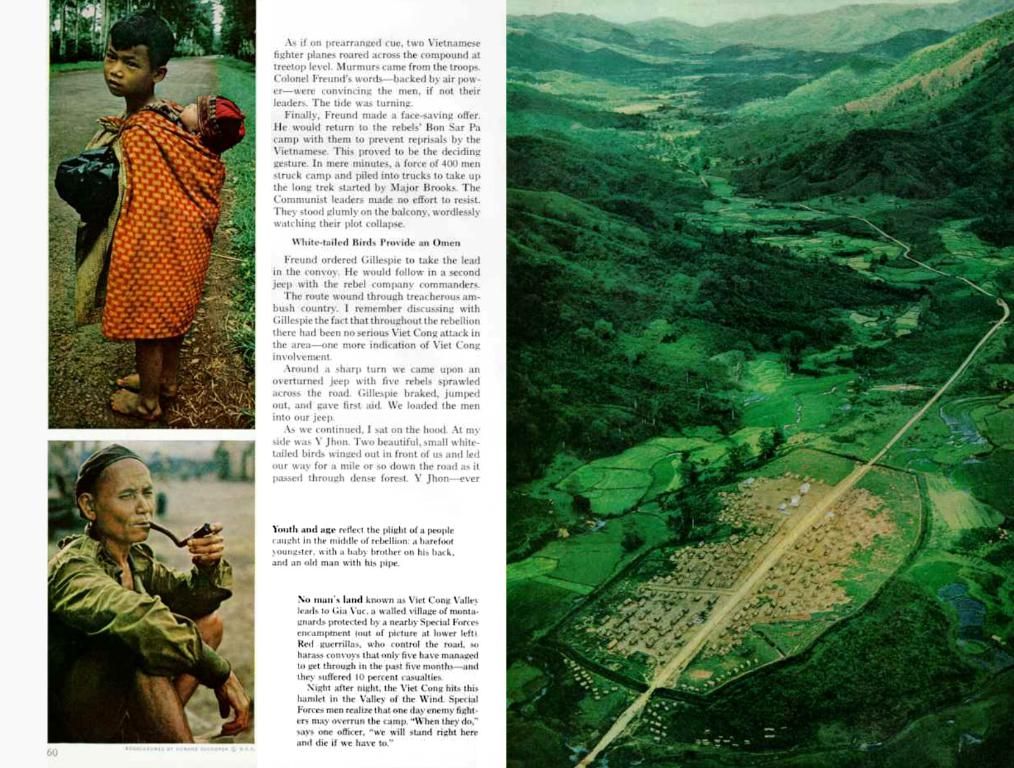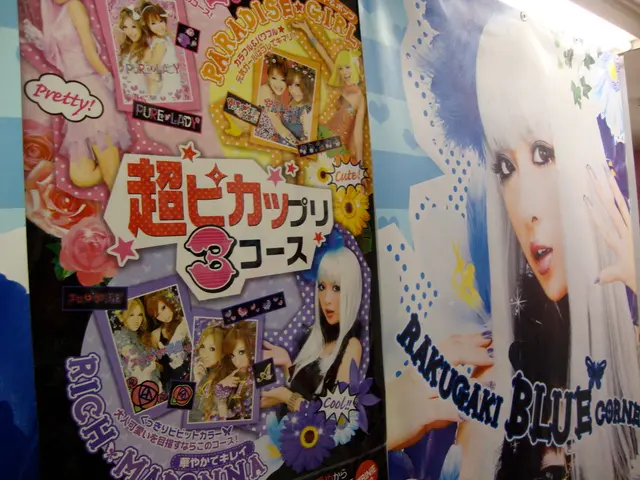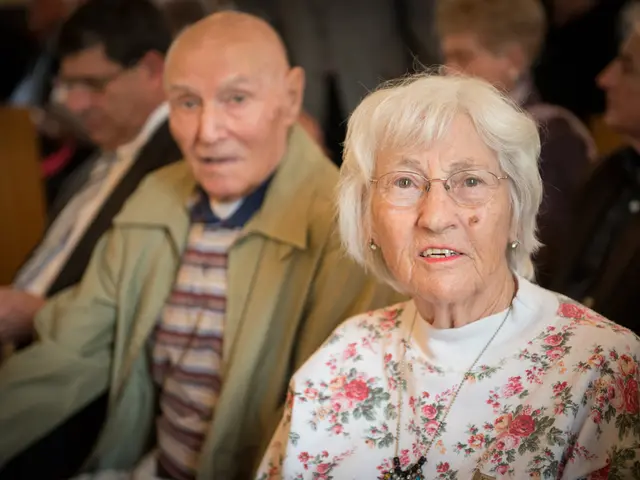The Versatile Wind Phone: A Global Comfort for the Bereaved
Moving Tale of Wind Telephones, a Unique Japanese Device Facilitating Last 'Chats' with Departed Loved Ones
Picture a secluded telephone booth perched on a hill in Ōtsuchi, Japan, overlooking the sea. Inside, a black rotary phone waits, disconnected from any network. This isn’t your typical phone booth; it's the original wind phone, a sanctuary for visitors seeking solace and connection with loved ones lost.
Established in 2010 by Itaru Sasaki, a garden designer grieving the loss of his cousin, the wind phone has since spread across the world as an innovative coping mechanism. It began as a personal grief outlet for Sasaki but unexpectedly transformed into a space for the community to share their emotions.
After the devastating 2011 earthquake and tsunami in the Tōhoku region, which tragically claimed over 19,000 lives, Sasaki chose to share his wind phone with others, offering them a place to locate spirituality and solace while grappling with grief.
Today, the concept has flourished beyond Japan. According to My Wind Phone, a worldwide map showing the locations of wind phones, there are now 366 installations - with an astounding 265 in the United States alone and another 111 scattered globally.
Perhaps it's the universal human experience of grief and the persistent search for meaning that resonates with people across cultures.
The Origin Story of the Wind Phone in Japan's Ōtsuchi
Ōtsuchi, a coastal fishing village in Japan's Iwate Prefecture, was home to thousands, including Itaru Sasaki. Following the loss of his cousin, a calligrapher, martial arts instructor, and dear friend, Sasaki found solace in an empty phone booth in his garden. Soon afterward, the wind phone emerged as his means to maintain communication with the beyond.
In an interview with Tessa Fontaine of The Believer, Sasaki explained the creation of his wind phone, "Life is only, at most, 100 years. But death is something that goes on much longer, both for the person who has died as well as the survivors, who must find a way to feel connected to the dead. Death does not end life; all the people who are left afterward are still figuring out what to do about it."
Months later, disaster struck Ōtsuchi, but not of Sasaki's own making. A catastrophic tsunami inundated the town, leaving nothing but destruction in its wake. Knowing that others had experienced similar heartbreak, Sasaki opened his wind phone to the public.
The Unparalleled Destruction of the 2011 Tōhoku Tsunami
The tsunami, triggered by a magnitude 9.1 earthquake, wreaked havoc on Japan's coastline, including the city of Miyako and Sendai. More than 19,000 lives were lost, and millions more were left without water, electricity, or homes. The immense devastation also caused a nuclear disaster at the Fukushima Daiichi Nuclear Power Plant, displacing over 150,000 people.
For those who managed to survive, the tsunami left deep emotional scars. Some reported seeing the spirits of tsunami victims, as is common in Japanese folklore, or felt lost in their pursuit of healing.
Sensing a need for comfort and connection, Sasaki welcomed mourning visitors to take a moment with his wind phone.
The Evolution of the Wind Phone into a Site of Pilgrimage
Over the years, the word has spread, and thousands have descended upon Ōtsuchi to have a final conversation with their lost loved ones. Kazuyoshi Sasaki, who lost his wife in the disaster, noted that the wind phone is unlike anything else, providing a space to speak--a wired, instinctual response to grief.
With the COVID-19 pandemic, many more found themselves suddenly bereft of goodbyes, creating a collective grief and interest in wind phones. As a result, organizers have reached out to Sasaki to collaborate on additional installations globally.
From Portland, Oregon, to Easton, Connecticut, to Offenbach, Germany, and beyond, wind phones can now be found in numerous locations. Each one offers a quiet, introspective space where individuals can reflect, heal, and find solace.
As you delve deeper into understanding the therapeutic qualities of the wind phone, explore the rituals of the Toraja people in Indonesia, who honor their deceased in a unique and intriguing manner, or journey to Nagoro, Japan, where the town has replaced its lost inhabitants with life-sized dolls [CONTEXT] .
- The universal human desire for healing and connection may explain why the wind phone, originally created as a coping mechanism for mental health and grief, has spread across diverse cultures and lifestyles, with installations in various regions including health-and-wellness centers, relationships counseling centers, and even museums of art and science.
- As the concept of the wind phone as a symbol of solace and acceptance of loss continues to resonate with people worldwide, it blends seamlessly with different cultural practices, such as the Toraja people's ceremonial rites, demonstrating the potential for cross-cultural integration of health-and-wellness ideologies and mental-health support.
- The popularization of mental-health awareness, driven by vulnerable discussions about individual struggles and societal challenges, has led to an increased interest in innovative approaches to tackle these issues collectively, like the establishment of wind phones in cultural institutions, fostering an open dialogue about relationships, lifestyle, and the search for peace and understanding in a world that's constantly evolving.








